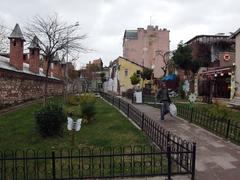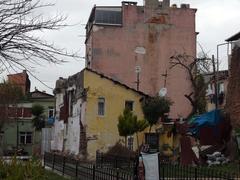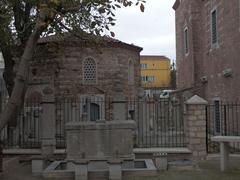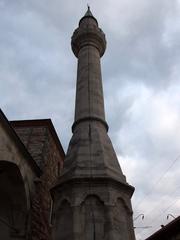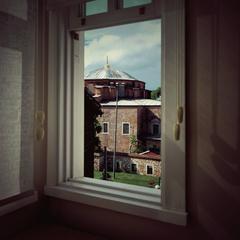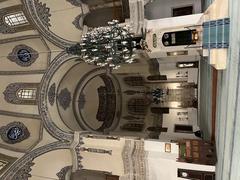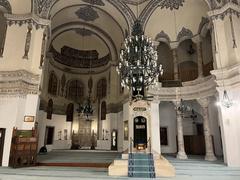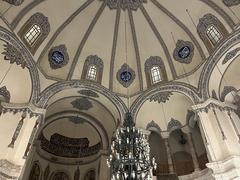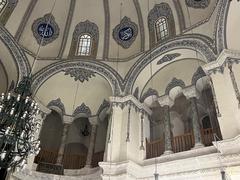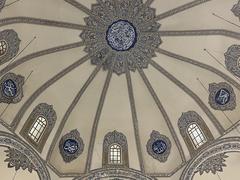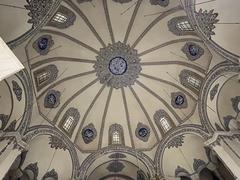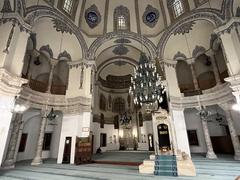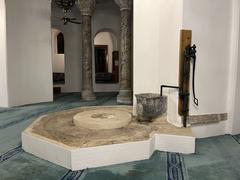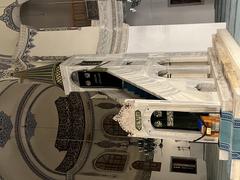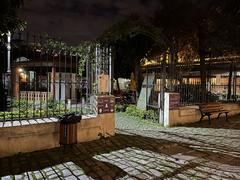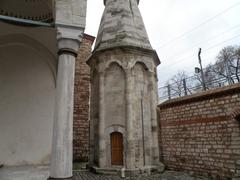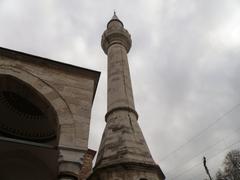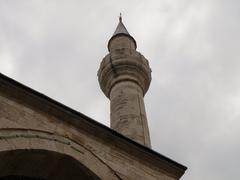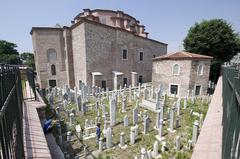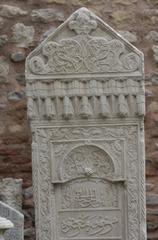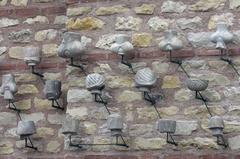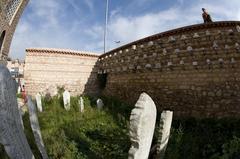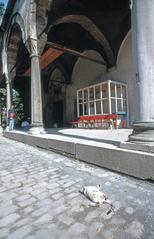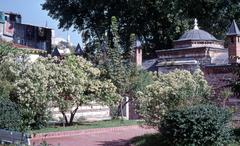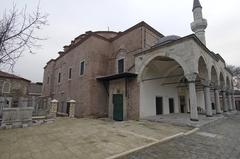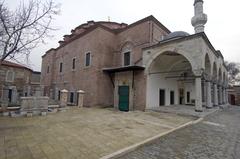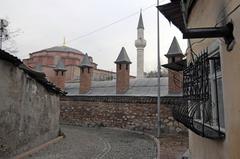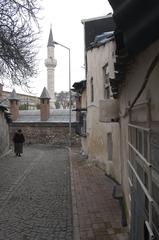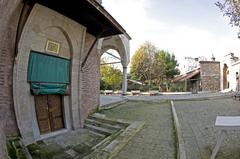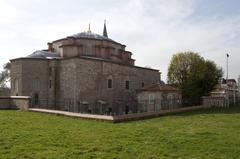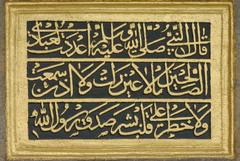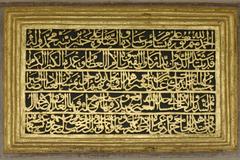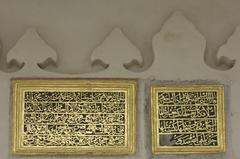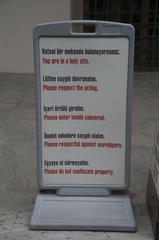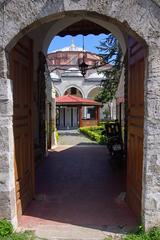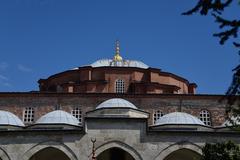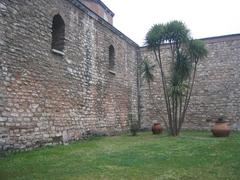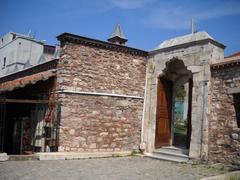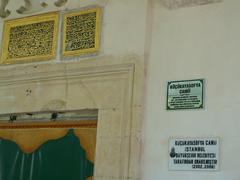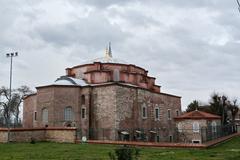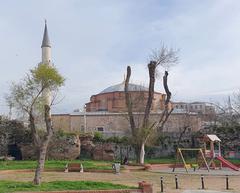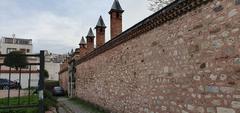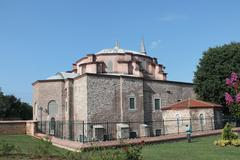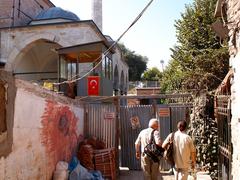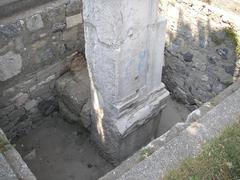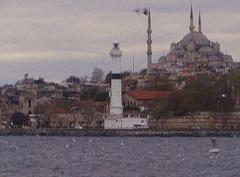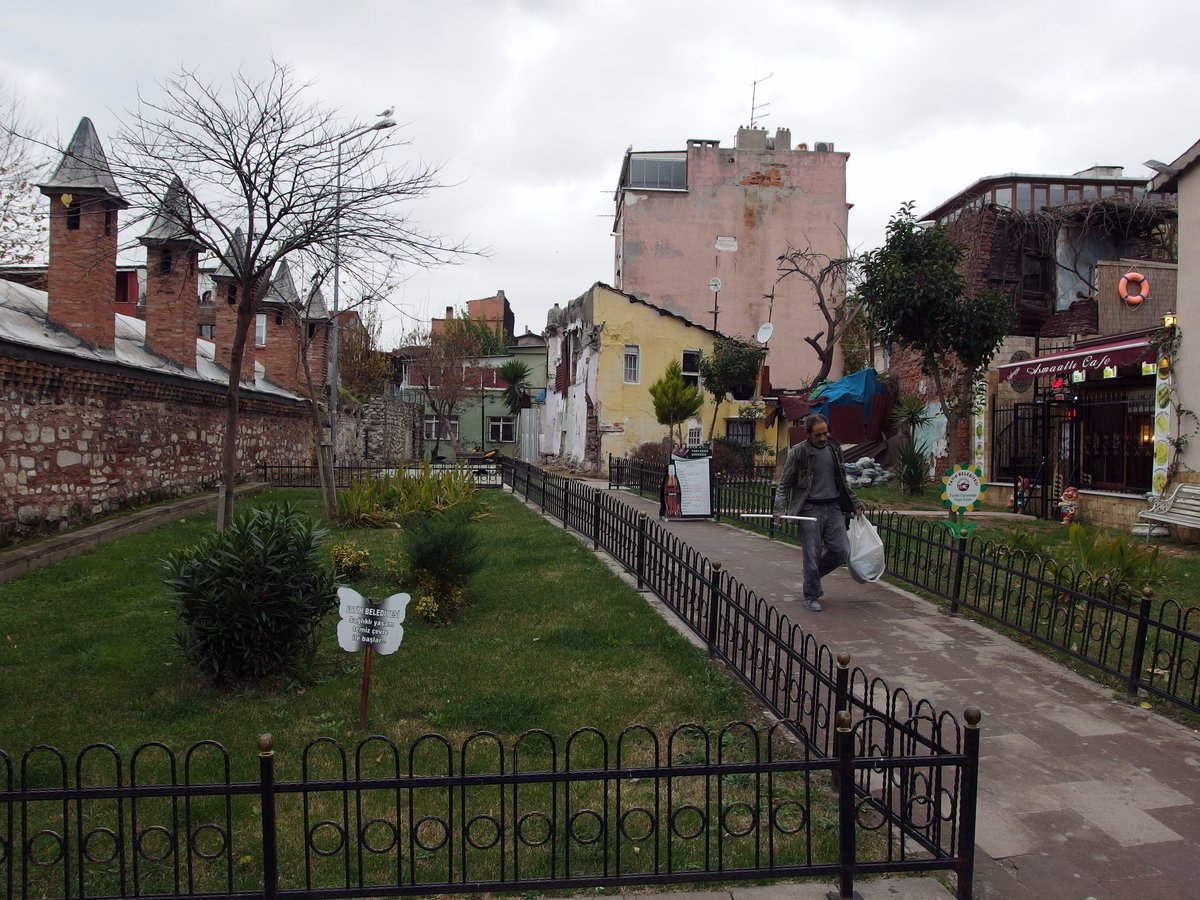
Visiting Küçük Ayasofya Camii: History, Tips, and Travel Information
Publication Date: 18/07/2024
Overview of the Monument
Küçük Ayasofya Camii, also known as the Little Hagia Sophia, is an architectural marvel nestled in the heart of Istanbul, Türkiye. This historical gem offers a unique window into the intricate tapestry of Byzantine and Ottoman heritage that defines this vibrant city. Originally constructed between 527 and 536 AD as the Church of Saints Sergius and Bacchus, the building was commissioned by Emperor Justinian I, who is also famed for the construction of the grand Hagia Sophia. The church served not only as a place of worship but also as an architectural prototype for its more famous counterpart (source) (source).
Following the Ottoman conquest of Constantinople in 1453, the church was transformed into a mosque under the reign of Sultan Bayezid II and renamed Küçük Ayasofya Camii. This conversion retains much of the original Byzantine architecture while incorporating significant Islamic elements, presenting a fascinating blend of styles and cultures. Today, the mosque stands as a symbol of Istanbul’s diverse historical and cultural heritage, drawing visitors from around the world who seek to explore its rich past and architectural beauty.
Navigation
- Introduction
- History and Significance
- Byzantine Era - Origins as the Church of Saints Sergius and Bacchus
- Architectural Significance - A Precursor to Hagia Sophia
- Ottoman Transformation - Conversion into a Mosque
- A Place of Worship and Historical Reflection
- Visitor Information
- Visiting Hours
- Tickets
- Accessibility
- Travel Tips
- Dress Code
- Photography
- Guided Tours
- Nearby Attractions
- Hagia Sophia
- Topkapi Palace
- Blue Mosque
- Conclusion
- FAQ
- Visit and Stay Up to Date
Introduction
Küçük Ayasofya Camii, also known as the Little Hagia Sophia, is a historic gem in Istanbul that offers a unique glimpse into the city’s rich Byzantine and Ottoman heritage. This guide will provide you with a detailed look at its history, architectural significance, and practical visitor information.
History and Significance
Byzantine Era - Origins as the Church of Saints Sergius and Bacchus
Originally built between 527 and 536 AD, Küçük Ayasofya Camii served as the Church of Saints Sergius and Bacchus. This dedication holds significance as these saints were believed to be soldier-saints, popular figures in the Byzantine military culture. The church’s construction was commissioned by Emperor Justinian I, a ruler known for his ambitious building projects, including the awe-inspiring Hagia Sophia. Interestingly, the Church of Saints Sergius and Bacchus predates its grander counterpart by a few years, serving as a kind of architectural experiment for the later masterpiece.
Architectural Significance - A Precursor to Hagia Sophia
The architectural design of the Church of Saints Sergius and Bacchus is crucial in understanding Byzantine art and architecture. It showcases an early and influential example of a domed octagon inscribed within a square, a design element that would later be perfected in the Hagia Sophia. This innovative structure, with its dome seemingly floating on light filtering through the surrounding windows, created a sense of ethereal beauty and architectural wonder. The church’s design, with its blend of Roman basilica elements and Eastern influences, reflects the cultural crossroads that Constantinople represented during Justinian’s reign. The use of rich materials like marble and intricate mosaics further emphasized the church’s importance within the Byzantine capital.
Ottoman Transformation - Conversion into a Mosque
Following the Ottoman conquest of Constantinople in 1453, the Church of Saints Sergius and Bacchus underwent a significant transformation. Around 1500, under the reign of Sultan Bayezid II, the church was converted into a mosque and renamed Küçük Ayasofya Camii, meaning “Little Hagia Sophia.” This conversion, typical of the Ottoman approach to conquered territories, involved several key changes. A minaret was added to the structure, the Christian altar was removed, and the interior was reoriented towards Mecca. Despite these alterations, the mosque retained its essential Byzantine architectural features, showcasing the Ottoman Empire’s tolerance and adaptation of existing structures.
A Place of Worship and Historical Reflection
Today, Küçük Ayasofya Camii stands as a functioning mosque, welcoming worshippers and visitors alike. Its historical significance as both a Byzantine church and an Ottoman mosque makes it a fascinating site for those interested in exploring the intertwined narratives of these two empires. The mosque’s relatively small size, compared to the grandeur of the Hagia Sophia, allows for a more intimate experience. Visitors can wander through the serene space, admiring the architectural interplay of light and form, and reflect on the building’s long and storied past. The presence of Byzantine-era elements, such as column capitals adorned with Christian crosses, alongside Islamic features like the mihrab (prayer niche), serves as a tangible reminder of the building’s fascinating journey through time.
Visitor Information
Visiting Hours: Küçük Ayasofya Camii is generally open to visitors from early morning until late evening. However, it is advisable to check the current visiting hours before planning your visit, as they may vary.
Tickets: Entry to Küçük Ayasofya Camii is free, but donations are appreciated to help with the upkeep of the mosque.
Accessibility: The mosque is accessible to visitors with disabilities, with ramps and assistance available upon request.
Travel Tips
- Dress Code: As with all mosques, modest dress is required. Women should cover their heads, and both men and women should wear clothing that covers their shoulders and knees.
- Photography: Photography is allowed, but be respectful of worshippers. Flash photography is not permitted inside the mosque.
- Guided Tours: Consider joining a guided tour to gain deeper insights into the history and architecture of Küçük Ayasofya Camii.
Nearby Attractions
- Hagia Sophia: Just a short walk away, this iconic landmark is a must-visit when in Istanbul.
- Topkapi Palace: Explore the opulent residence of Ottoman sultans, filled with historical artifacts and stunning architecture.
- Blue Mosque: Another architectural marvel, known for its striking blue tiles and impressive domes.
Conclusion
Küçük Ayasofya Camii offers a unique blend of Byzantine and Ottoman history, making it a captivating destination for history enthusiasts and casual visitors alike. Whether you are admiring its architectural beauty or reflecting on its storied past, this mosque provides a serene and enriching experience in the heart of Istanbul.
FAQ
What are the visiting hours for Küçük Ayasofya Camii?
Visiting hours generally range from early morning to late evening, but it is best to check current timings before your visit.
Is Küçük Ayasofya Camii accessible for people with disabilities?
Yes, the mosque is accessible, with ramps and assistance available upon request.
Is there an entry fee for Küçük Ayasofya Camii?
Entry is free, but donations are appreciated.
Visit and Stay Up to Date
For more information and updates, download our mobile app Audiala, check out other related posts, or follow us on social media.
Summary and Final Tips
Visiting Küçük Ayasofya Camii offers an unparalleled journey through time, revealing the layered histories of Byzantine and Ottoman empires that have shaped Istanbul. This small yet profound monument provides an intimate experience, allowing visitors to immerse themselves in its serene environment while appreciating the architectural ingenuity that bridges two significant eras. The blend of Christian and Islamic elements within the mosque serves as a testament to the city’s complex and inclusive history. Whether you’re a history enthusiast, architecture aficionado, or simply seeking a peaceful place to reflect, Küçük Ayasofya Camii promises a memorable and enriching visit. For the most up-to-date information on visiting hours and events, consider downloading the Audiala app or following relevant social media channels (source) (source).
Sources and Further Reading
- A Comprehensive Guide to Visiting Küçük Ayasofya Camii - History, Significance, and Visitor Information, 2023, Author https://muze.gov.tr/en/museum/ayasofya
- Visiting Küçük Ayasofya Camii - Hours, Tickets, and Tips for a Memorable Experience in Istanbul, 2023, Author https://namazvakitleri.diyanet.gov.tr/en-US
